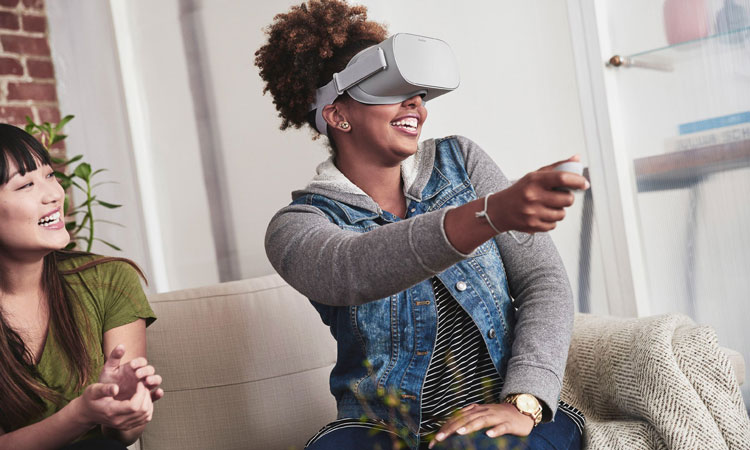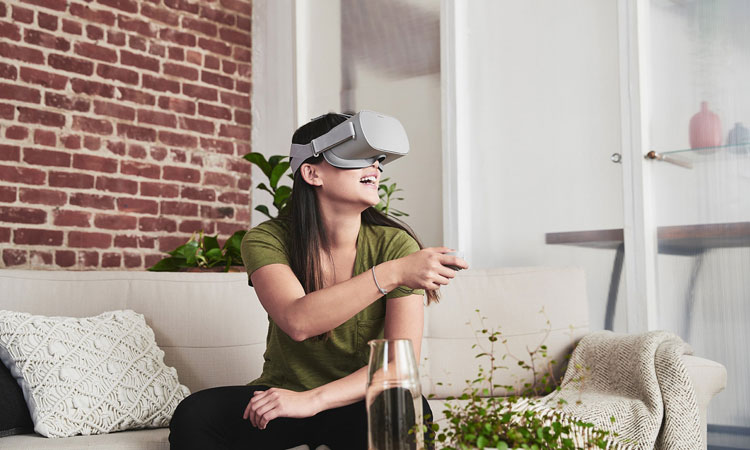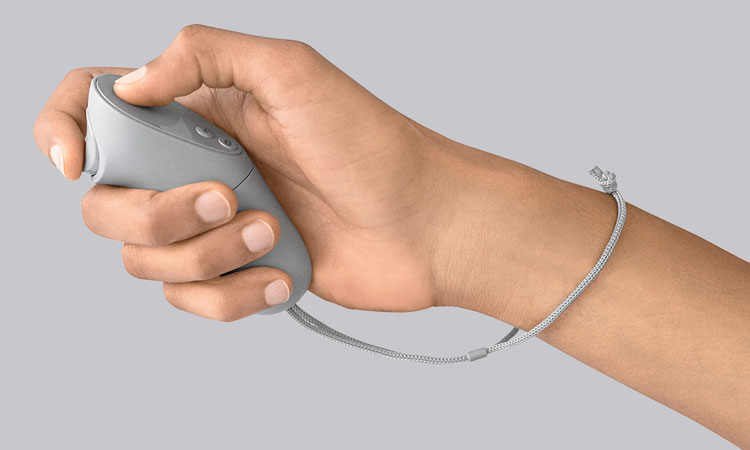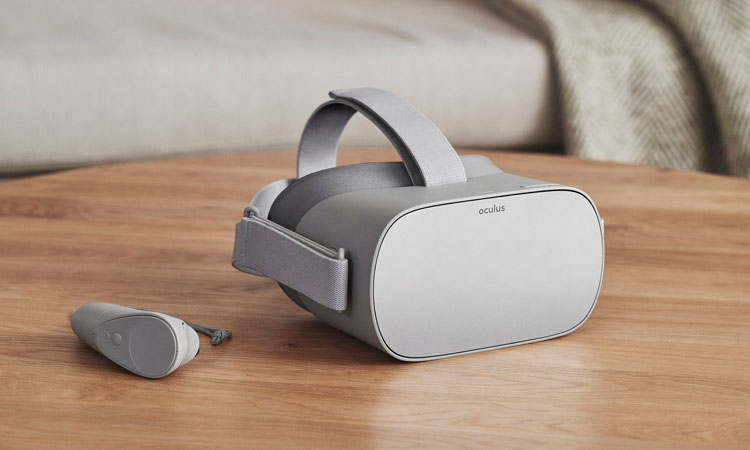Facebook has unveiled its new Oculus Go virtual-reality headset, which functions without being plugged into a computer or paired with a phone.
Unveiled earlier this week, the headset is the first major hardware launch from Oculus since the company was bought by Facebook in 2014. It joins a product range that also includes the mobile Oculus Gear VR and the high-end Oculus Rift.
Unlike the Rift, it works completely on its own – something Facebook believes will make it more appealing to the masses. Company founder Mark Zuckerburg has described it as the “most accessible VR headset ever.”
The grey headset is designed with soft elastic straps and a foam layer that cushions against the wearer’s face.
It is equipped with a high-resolution LCD screen display, and “next generation” lenses that offer a wide-field view and significantly reduced glare.
Speakers are built into the side of the headset, but users can plug in headphones should they want a more immersive or private experience.
Accessibility to the masses is – according to the company – also addressed in the price of the headset, which will be $199 (approximately £149) when it launches in November.
“We think people are going to spend a lot more time in VR when they get a stand-alone device, so we really wanted Oculus Go to be a leap in both comfort and visual clarity,” said Hugo Barra, head of virtual reality at Oculus.
“We wanted Oculus Go to deliver the best visual clarity of any VR product we have ever built,” he added. “You get much sharper text and beautifully defined images.”
Social network Facebook acquired Oculus in 2014 for $2bn. Zuckerburg announced the arrival of the new headset at Oculus’ annual conference on 11 October 2017.
Introducing the conference, the tech entrepreneur said he was “more committed than ever to the future of VR”.
“It’s not about escaping reality, it’s about making it better,” he said. “It’s about curing diseases, connecting families, spreading empathy, rethinking work, improving games, and bringing us all closer together.”
The potential of VR has been much discussed in recent years. In 2015, visualisation artist Olivier Demangel predicted that that the technology would become “more powerful than cocaine” as a tool for experience.
In 2016, Ekke Piirisild of VR studio VRtisan claimed it would soon allow architects and designers to create buildings and products intuitively in 3D space.





Comments are closed, but trackbacks and pingbacks are open.